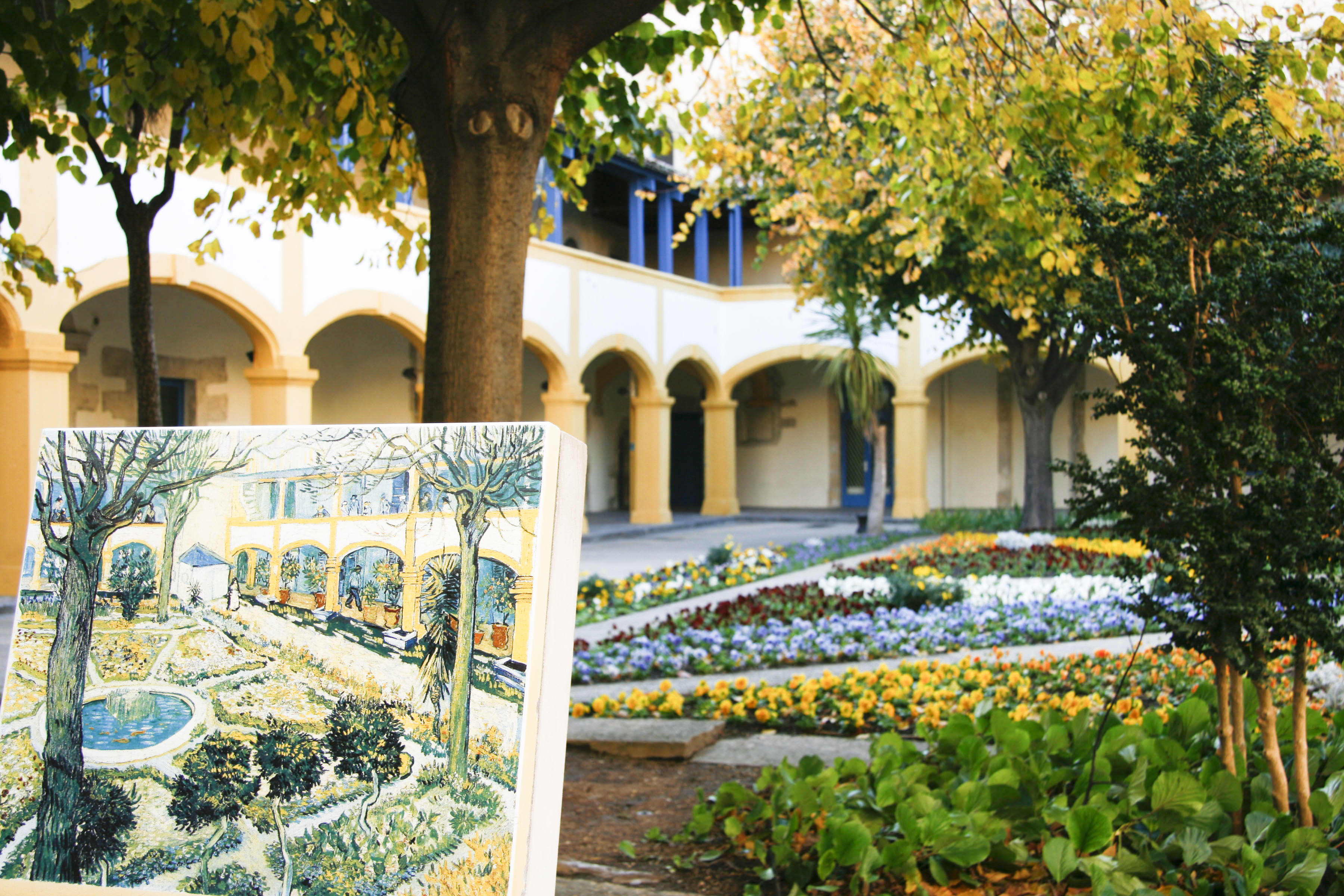Armed with Peter Mayle’s 1989 best-seller A Year in Provence, my husband and I spent a romantic week in Provence in 1994. Newly love-smitten, we stayed in a quaint hotel overlooking the Rhône, enjoying breakfasts on our balcony by the river and strolling starry-eyed into the Place du Forum for dinner at the iconic Le Café La Nuit, the subject of Vincent Van Gogh’s 1888 painting “Café Terrace at Night.”
Vincent Van Gogh painted “Café Terrace at Night” in Arles, France.
Dea Picture Library| De Agostini | Getty Images
Not only does that café still stand, but it’s still instantly recognizable.
The famous cafe depicted in Van Gogh’s “Café Terrace at Night.”
sergioph | iStock Editorial | Getty Images
From 1888 to 1889, the now-famous Dutch Post-Impressionist painter lived in Arles, France where he produced over 300 paintings and drawings. They include “Café Terrace at Night” and “Starry Night over the Rhône” as well as his Langlois Bridge series, Bedroom in Arles series and the second of his Sunflower paintings series.
One of several oil paintings in Van Gogh’s Langlois Bridge at Arles series.
Heritage Images | Hulton Fine Art Collection | Getty Images
After falling out with his friend and fellow artist Paul Gauguin, who was staying with him at the time — and infamously cutting off one of his own ears — Van Gogh died in the nearby asylum of Saint-Rémy-de-Provence. That was where he painted “Irises.”
Van Gogh made a series of paintings, drawings and a watercolor of the Langlois Bridge, which was later reconstructed and named Pont Van-Gogh.
Education Images | Universal Images Group | Getty Images
Without the panache of Paris or the glitz of the Riviera, Arles (pronounced “Arl”) gets its fair share of travelers — around two million a year — who come to see Van Gogh’s iconic scenes in the flesh. Travelers can follow a map to see the places he painted or referenced in letters (some which still exist, and some which do not). Today’s visitors discover an architectural, artistic and cultural treasure, famous not only for one tortured artist, but for having been a leading city of the Western Roman Empire with a strategically vital trading port and a canal link to the Mediterranean.
Roman antiquities, medieval monuments
Two thousand years before Van Gogh’s time, Provence was part of the Roman Empire. From the 1st century AD, the impressive three-tiered Roman amphitheatre was the scene of gladiator fights witnessed by over 20,000 baying citizens.
A drawing of the Arles Amphitheatre, which was converted into a fortress for houses, chapels and a town square after the fall of the Roman Empire.
Bildagentur-online | Universal Images Group | Getty Images
These days it hosts regular bullfights, no doubt equally bloody.
The Arles Amphitheatre has seating once again and now hosts bullfighting events.
Leonid Andronov | iStock | Getty Images
The Cryptoporticus is a breathtaking system of underground vaulted galleries that literally formed the foundations of the ancient Roman forum, or marketplace. Nowadays, on Wednesdays and Saturdays, Arles’ main thoroughfare — Boulevard des Lices — is the venue for a huge and utterly marvelous market for local delights, including soaps and essential oils from the lavender fields of Provence and gourmet salt hand-raked from the marshlands of the Camargue.
The Romanesque Church of Saint Trophime in the Place de la République boasts a fabulous portal and evocative 12th-century cloisters.
An albumen silver print of the cloisters of the Church of Saint Trophime, circa 1861.
Sepia Times | Universal Images Group | Getty Images
Their tranquility stands in stark contrast to the mayhem of the Saturday afternoon wedding processions, complete with noisy fireworks and clouds of smoke that fill the square. Alas — as the first Bishop of Arles, poor Trophimus must be turning in his grave.
The cloisters of the Church of Saint Trophime, circa 2017.
wjarek | iStock Editorial | Getty Images
Where to stay and dine in Arles
Built in 1664 as a Carmelite convent and a monument in its own right, the atmospheric Hôtel Jules César was refurbished in 2014 under the design directive of Arles native Christian Lacroix. It may be the most stylish accommodation in town, but perhaps not the most comfortably furnished. In some areas, form can trump function.
Arles offers many excellent restaurants, two being Le Gaboulet and La Caravelle. It is recommended to have a drink at Le Café La Nuit, meaning only one. The place is so famous that it doesn’t have to try very hard.
Arles: beyond the art
It’s only a half-hour drive through the Camargue wetland delta — a UNESCO biosphere reserve famous for black bulls, pink flamingos, gray salt and wild white horses — to Saintes-Maries-de-la-Mer on the Mediterranean coast; the latter is yet another location painted by Van Gogh.
“Seascape near Les Saintes-Maries-de-la-Mer” painted by Vincent Van Gogh in June 1888.
Fine Art | Corbis Historical | Getty Images
Tourism here has boomed. Twenty-five years ago, there was nothing between the rough stone jetty and the 9th-to-12th century fortress-church in the background. That space is now full of restaurants, shops and tourist accommodations. A better bet is the medieval walled city of Aigues-Mortes, just 35 kilometers from Arles. It truly comes alive during the October fête votive — 11 days of jollification with bull-running, bull-fighting and brass band parades.
